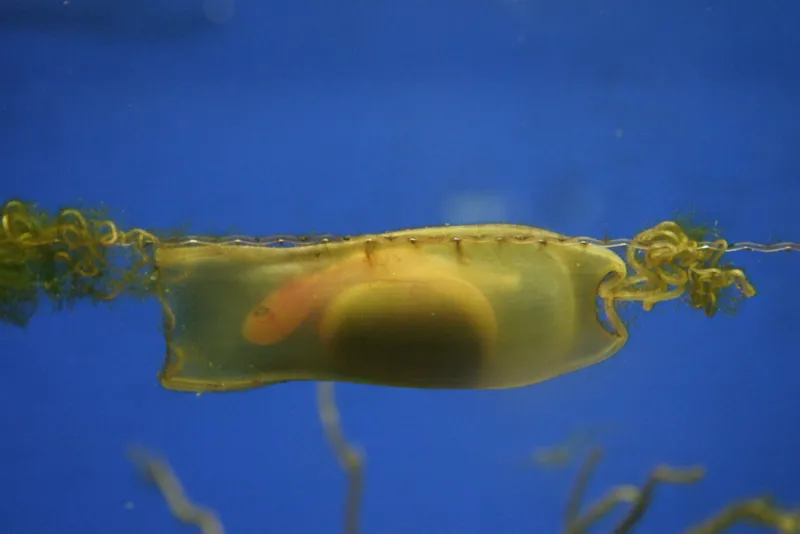Shark Embryo

Sharks have young in three different ways. After internal fertilization, some species lay a thick egg case that encloses the shark embryo (seen in the photo here). Most species are ovoviviparous, which means that the shark hatches and develops within the female shark and is born live. A third way (viviparous) is similar to human development, where the young shark grows within the female and gets nutrients from a placental link to the mother.
A January 2013 study in the journal PLoS ONE shows that embryonic bamboo sharks in egg cases can react to predation signals. The embryos in this study were exposed to electric fields that simulate the shark's predators and, in response, the sharks stop all gill movement and hold still so as not to alert the predator of their existence.

